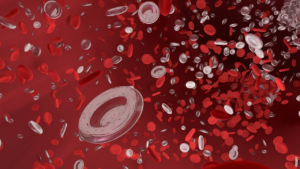An Invisible Battle Within: Unveiling the Mystery of Rheumatoid Arthritis
Rheumatoid arthritis is a complex autoimmune disease that quietly infiltrates the lives of millions, causing pain and debilitation. As we delve into the depths of this enigmatic condition, a fascinating tale of self-destruction and resilience unfolds.
The Origins of a Silent Intruder
Rheumatoid arthritis, commonly known as RA, originates from an intricate interplay between genetic and environmental factors. While the exact trigger remains elusive, researchers believe that certain genes predispose individuals to develop this aggressive form of arthritis.
The Immune System’s Betrayal
Like a double-edged sword, the immune system is designed to safeguard our bodies from foreign invaders. However, in the case of rheumatoid arthritis, it inexplicably turns against its own host. The immune system mistakenly identifies the synovium, a thin membrane lining the joints, as a threat and launches an attack.
A Vicious Cycle: Inflammation and Destruction
Once the immune system mobilizes its troops, a cascade of events unfolds, leading to chronic inflammation within the joints. This persistent inflammation not only causes redness, swelling, and pain but also gradually erodes the cartilage and bone within the affected joints.
Unmasking the Culprit: The Role of Autoantibodies
Autoantibodies, such as rheumatoid factor and anti-cyclic citrullinated peptide (anti-CCP) antibodies, are key players in the development of rheumatoid arthritis. These rogue antibodies attack healthy tissues, fueling the destructive process and perpetuating the cycle of inflammation.
Post
Post
A Symphony of Symptoms: Beyond the Joints
While the primary battleground of rheumatoid arthritis is the joints, this insidious disease can wreak havoc on various organs and systems. Fatigue, fever, and loss of appetite are common systemic symptoms, while complications such as rheumatoid nodules, lung inflammation, and cardiovascular problems may arise in severe cases.
Empowering Warriors: Treatment and Management
Although there is no cure for rheumatoid arthritis, advancements in medical research have transformed the landscape of treatment. A combination of medications, including disease-modifying antirheumatic drugs (DMARDs) and biologic agents, along with physical therapy and lifestyle modifications, can help manage symptoms and prevent further joint damage.
Hope on the Horizon: Unraveling the Mysteries
As the scientific community continues to unravel the mysteries of rheumatoid arthritis, novel therapeutic approaches are being explored. From stem cell therapy to personalized medicine, the future holds promise for improved outcomes and a better quality of life for those affected by this relentless disease.
In the realm of rheumatoid arthritis, the battle rages on, but so does the spirit of resilience. Through understanding, support, and ongoing research, we inch closer to unveiling the secrets of this invisible foe, inspiring hope for a brighter future.



